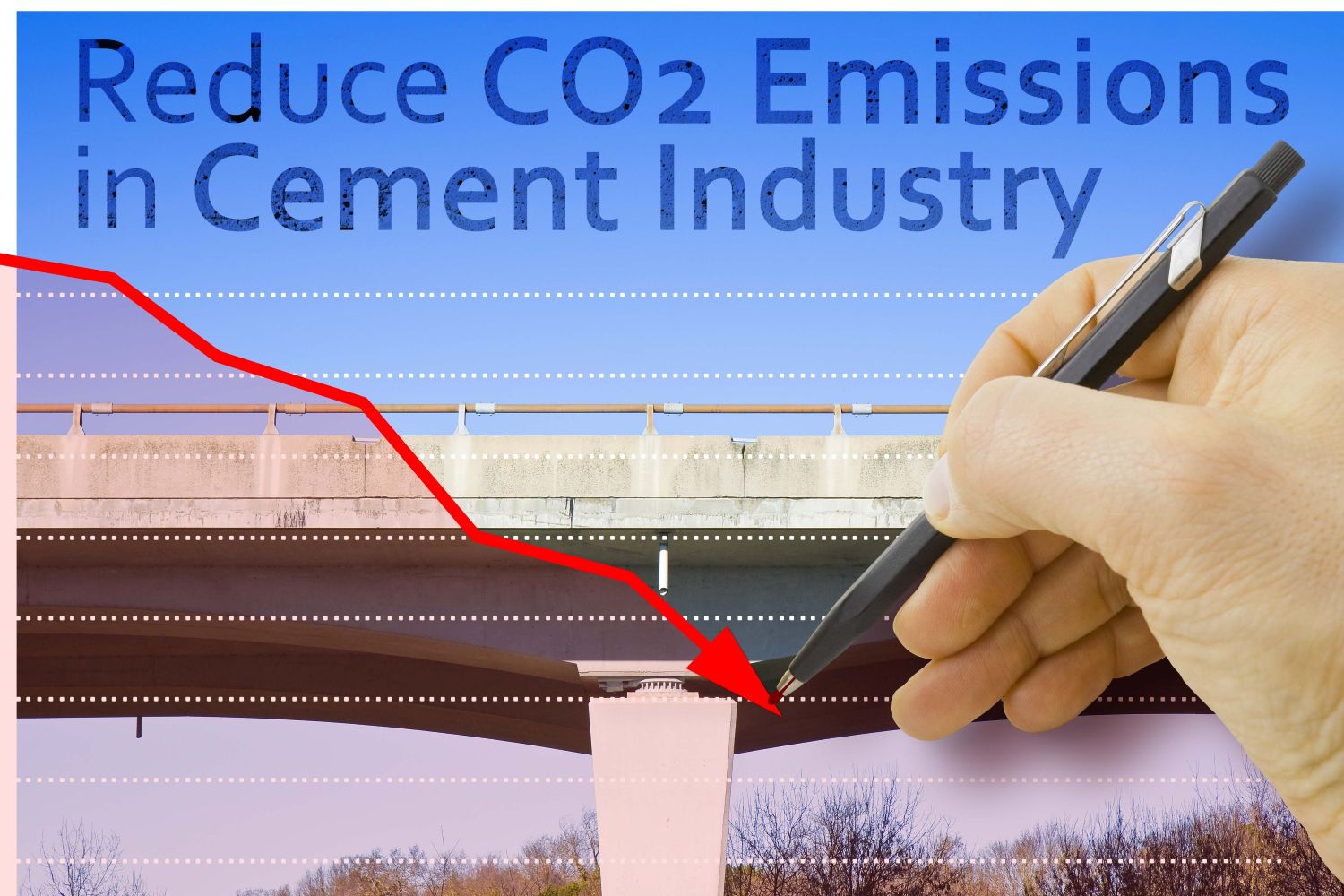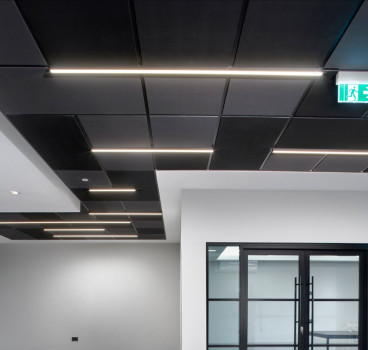Can cement - the World’s most used material ever be green?
Concrete built the modern world and it’s quietly destroying it as well. If concrete were a country, it would rank as the third-largest emitter of CO₂ on Earth, behind only China and the United States. Cement, its key ingredient, is responsible for roughly 8% of global emissions. That statistic doesn’t come from reckless waste or corporate greed - it’s baked into the chemistry itself. When limestone is heated to make cement, it releases carbon dioxide - an inevitable of the process – so the real question is not whether concrete is dirty - it’s whether it can ever be clean, writes John Ridgeway.
Every year, the world pours around 30 billion tonnes of concrete. It’s cheap, strong, and almost absurdly versatile. Unlike steel or timber, it doesn’t rust, rot, or burn easily. It can be moulded into almost any shape. For architects, it’s the dream medium and for engineers, the ultimate utility.
But that dependability comes with a price. Producing one tonne of cement releases roughly one tonne of CO₂. Scale that up to the global level and you start to understand why environmentalists have long viewed the industry as one of construction’s hardest decarbonisation challenges. Concrete isn’t optional. Humanity can’t just “stop using it.” What’s left then, is innovation - the slow, grinding kind that has to tackle not just chemistry, but infrastructure, economics and culture.
The chemistry of change
The biggest carbon hit comes from Portland cement, invented in the 19th century and still the backbone of concrete production today. Making it involves heating limestone and clay in a kiln to over 1,400°C, a process that demands vast amounts of energy and triggers a chemical reaction releasing CO₂.
Several paths now promise to break that link. Supplementary cementitious materials (SCMs), like fly ash, slag, or calcined clays, can replace a portion of traditional clinker, cutting emissions without compromising performance. These materials were once industrial by-products, now rebranded as low-carbon alternatives.
Then there’s carbon capture and storage (CCS), which involves trapping emissions before they escape the kiln and locking them away underground. It’s technically viable, but expensive and energy-hungry. A handful of plants, including pioneering projects in Norway and Canada, are proving it can be done. The challenge is scaling it and fast.
Meanwhile, innovators are flipping the chemistry entirely. Carbon-cured concrete injects CO₂ into the mix, where it reacts with calcium to form solid minerals. The result is concrete that literally traps carbon instead of releasing it. It’s not mainstream yet, but it’s a glimpse of what a carbon-neutral future might look like.
However, technology alone won’t solve the problem. The construction industry moves slowly, governed by regulations, warranties and a culture that prizes reliability above all else. A new cement mix might perform flawlessly in the lab, but on a multi-billion-pound infrastructure project, “flawless” isn’t good enough. It must be proven, certified, and guaranteed to behave exactly as expected - for decades. That conservatism makes sense. Buildings fail in real life, not in theory. Yet it also slows the uptake of sustainable alternatives. Every innovation must run a gauntlet of testing, regulation and risk aversion before it earns a place on site.
Change, therefore, often begins with the clients and designers - those willing to specify lower-carbon materials and accept that “better for the planet” might sometimes mean different, not identical. The courage to experiment within the boundaries of safety could be the difference between evolution and stagnation.
The numbers game
Against such a background, “low-carbon concrete” has become a marketing mantra, but definitions vary wildly. One mix might cut emissions by 10% - another by 70%. Without standardised metrics, the label means little. The industry is now pushing for Environmental Product Declarations (EPDs), verified reports that quantify a material’s lifecycle impact. They’re not glamorous, but they’re essential. Another eco-friendly option is glass fiber reinforced concrete (GFRC) which according to MASS Concrete boasts a 60% lower environmental impact compared to traditional precast concrete.
The numbers tell a grim truth - even with aggressive innovation, the world will still use billions of tonnes of concrete for decades to come. Demand is locked in by urbanisation, infrastructure growth and the sheer durability of what’s already built. So, the real question isn’t whether we can eliminate emissions entirely, but how quickly we can bend the curve downward.
Big names are finally paying attention. Companies like Heidelberg Materials, Holcim and Cemex are pouring billions into low-carbon technologies, from carbon capture to alternative binders and recycled aggregates. Startups are attacking the problem from the fringes, producing cement from seawater, reusing demolition waste, even cultivating biogenic limestone through algae.

These aren’t fringe experiments anymore - they’re industrial-scale bets. Governments are backing them too, through carbon pricing, green procurement policies and research funding. Yet the clock is merciless. Every year of delay locks in millions of tonnes of high-carbon infrastructure that will stand for half a century or more.
The human factor
However, behind the chemistry and corporate pledges lies a human truth: - concrete’s dominance isn’t just technical, it’s cultural. It’s the material of modernity, solid, predictable and democratic. It allowed cities to grow vertically and nations to connect horizontally. Replacing it isn’t simply a technical challenge, it represents a shift in how we think about progress itself.
For decades, “more concrete” meant “more development.” The idea of “less” feels almost subversive. Yet designers are beginning to think differently, using concrete only where it matters, combining it with timber, steel, or composites to reduce volume without sacrificing strength. In the end, the greenest concrete might be the one we use less of.
So can concrete ever truly be green? Not in the absolute sense. Its core chemistry will always carry a carbon cost, but it can be dramatically cleaner, smarter and part of a circular system where waste becomes feedstock and CO₂ becomes raw material.
The future won’t be a single miracle mix or a new wonder binder. It will be a patchwork of solutions, partial replacements, efficient design, recycled materials and carbon capture - working together to chip away at the industry’s footprint. Progress will be measured not in headlines, but in tonnes avoided and in projects delivered with lower impact. Concrete won’t vanish. It will evolve and, with the right pressure, conscience and creativity, it might just build a world that’s worth living in.
Additional Blogs

When fire breaks out who really knows the system
The story that caught my attention recently wasn’t about fire growth or building loss, it was about confusion. Specifically, the confusion faced by the fire service when arriving at buildings...
Read moreThe design and development of Nexus Layouts
When Zentia set out to rethink the suspended ceiling, the brief was clear: deliver greater creative freedom for designers, more distinctive visual identity for clients, and a solution that could keep...
Read more

The 100-year construction project or why longevity Is the new sustainability
For decades, the construction sector has defined sustainability through metrics such as operational energy, embodied carbon, material efficiency and circularity. These measures remain vital, but a...
Read more